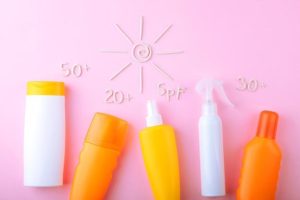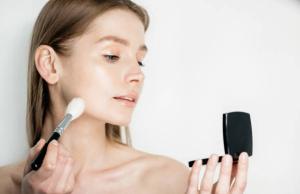
When it comes to an effective skincare routine, the order in which you apply products matters just as much as the products themselves. Applying retinol, a derivative of vitamin A and a powerful anti-aging ingredient, over facial oil may change the outcome of your skincare efforts. This article dives into what exactly happens when you layer retinol over oil, exploring the benefits and potential drawbacks of this combination to understand better how to incorporate both into your skincare routine effectively.
Understanding Retinol: The Potent Anti-Aging Ingredient

Retinol is revered in the beauty industry for its profound effect on aging skin. Significantly, retinol has been proven to reduce fine lines, wrinkles, and improve the overall texture of the skin. Its ability to increase cell turnover and stimulate collagen production makes it a staple in many anti-aging regimens. However, with great power comes great responsibility, as retinol can also lead to skin sensitivity if not properly managed or applied.
Facial oils, on the other hand, have gained prominence for their hydrating and protective qualities. These oils often contain a mix of vitamins, antioxidants, and fatty acids that help to nourish and repair the skin barrier, leading to a healthier, more radiant complexion. Integrating oils into your routine can help combat dryness, balance oil production, and provide an extra layer of defense against environmental stressors.
The Consequences of Applying Retinol Over Facial Oil

Applying retinol over facial oil can impact the effectiveness and absorption of the retinol, leading to various skin reactions. Understanding how these products interact is key to maximizing their benefits and minimizing any adverse effects. Here’s a breakdown of potential outcomes:
| Outcome | Description |
|---|---|
| Reduced Effectiveness | Facial oils can create a barrier on the skin that may prevent retinol from penetrating deeply, reducing its effectiveness in treating wrinkles and fine lines. |
| Increased Irritation | Some oils can enhance the absorption of retinol, potentially leading to increased skin sensitivity, dryness, or irritation. |
| Delayed Results | Due to reduced absorption, the anticipated benefits of retinol, such as improved texture and reduced acne, may take longer to manifest. |
It is generally recommended to apply retinol on clean, dry skin before adding oils, to ensure optimal absorption and effectiveness. Always consult with a skincare professional when integrating new products into your regimen.
What Happens When Retinol Meets Facial Oil
Retinol is typically used after cleansing and before moisturizing to ensure its direct contact with the skin. Introducing a layer of oil before retinol can create a barrier, limiting retinol’s ability to penetrate the skin effectively. While some argue that oils might dilute retinol’s strength, others suggest that an oil base could potentially ease retinol’s potential irritation, acting as a buffer. Finding the right balance in application is key to reaping the benefits of both retinol and facial oils.
Potential Outcomes of Layering Retinol Over Oil
Putting retinol over facial oil could result in a few scenarios. The oil may serve as a protective layer, reducing retinol’s potency but also its irritative effect. Conversely, the oil barrier might prevent retinol from reaching its target skin layers, thereby diminishing its overall efficacy. Some experts argue that proper timing between applications could mitigate these effects, suggesting that users wait a period after applying oil before adding retinol. Experimentation and careful observation can help determine the best approach for each individual skin type.
Best Practices for Using Retinol with Facial Oils
To get the most out of combining retinol with facial oils, it’s important to follow a few guidelines. Numbered below are three best practices to consider when integrating these products into your skincare routine:
- Apply in the Right Order: To increase retinol absorption, apply it directly to cleansed skin before any oils.
- Wait It Out: Allow retinol to fully absorb into the skin—around 20 to 30 minutes—before applying facial oil.
- Dose Appropriately: Be mindful of the concentration of retinol and the type of oil you’re using to avoid skin irritation.
Adhering to these practices can ensure that your skin reaps the full benefits of both retinol and facial oils without undue side effects.
Tips for Avoiding Unwanted Skin Reactions
Combining powerful skincare ingredients like retinol with facial oils requires a careful approach to avoid unwanted reactions. Prior to fully integrating these products into your regimen, it’s advisable to do a patch test. Additionally, starting with a lower concentration of retinol can help your skin adapt without triggering adverse effects. Below, a few tried-and-true tips for a harmonious skincare experience are listed:
- Patch Test: Before applying retinol over oil to your entire face, test the combination on a small skin area to detect any sensitivity or reaction.
- Start Slow: Introduce retinol slowly into your regimen, beginning with lower frequencies and concentrations to allow your skin to adapt gradually.
- Monitor and Adjust: Pay attention to your skin’s response and adjust application technique, product amounts, or frequency accordingly.
Conclusion
Layering retinol over facial oil can be beneficial if done correctly. It’s crucial to understand the unique properties of retinol and oils and how they interact with one another. Adhering to the outlined practices can prevent potential issues and help achieve a harmonious balance, leading to a glowing, well-nourished complexion. With patience and care in application, combining these powerful skincare ingredients can elevate your routine to new heights.
Frequently Asked Questions
FAQ 1: Can I use retinol and facial oil together in my skincare routine?
Yes, retinol and facial oil can be used together. Properly layering these products in the right order and allowing for appropriate absorption time is key to maximizing their collective benefits.
FAQ 2: Should I apply retinol before or after facial oil?
It’s recommended to apply retinol before facial oil. This ensures that the retinol can penetrate the skin without the barrier that oils may create. Applying oil afterwards can help lock in moisture and provide added nourishment.
FAQ 3: How long should I wait after applying retinol to use facial oil?
Waiting about 20-30 minutes after applying retinol before using facial oil is generally advised. This provides ample time for the retinol to absorb properly into the skin.
FAQ 4: Will facial oil reduce the effectiveness of retinol?
Facial oil may reduce the penetrative ability of retinol if layered on top of it without waiting, but if applied after an appropriate waiting period, it can help mitigate irritation and provide a buffer for sensitive skin.
FAQ 5: What type of facial oil is best to use with retinol?
Lightweight, non-comedogenic oils like rosehip, grapeseed, or squalane are recommended to use with retinol. These oils are less likely to clog pores and can offer hydrating and calming benefits without interfering with retinol’s action.





